The Montserrat mountains rise almost vertically from the surrounding landscape to 2,055 ft (1,236 m) above sea level. Montserrat means “jagged peaks” in Catalan, and their unusual shape is prominent for miles around.
The mountains are a popular day trip from Barcelona, reachable in just over an hour by train or a 45-minute drive. The main attraction is Santa Maria de Montserrat Abbey, a Benadictine monastery perched near the mountain top 2,000 ft (600m) above the valley floor. The mountains also have several good hiking trails, and two funiculars that ascend and descend from the monastery area. The monastery can be reached on foot, or by automobile, rack railway or cable car.
After a beautiful sunrise, we rode the metro from our hotel to Placa d’Espanya station to catch the train to Montserrat. Placa d’Espanya is a major station in Barcelona, connecting several metro lines with a multitude of regional trains. We enjoyed the trip through the Catalan countryside and were excited to see Montserrat in the distance as we neared.
We opted for the cable car up, with great views to the valley as we ascended. With about a half-hour to kill before our timed ticket entry to tour the monastery, we stopped for a snack at one of several restaurants in the complex.
Santa Maria de Montserrat Abbey is an active monastery with over 80 monks. It was founded in the 11th century, but the current buildings were rebuilt in the 19th and 20th centuries. One of the major attractions within is the statue of the Madonna and Child. The statue, originally believed to have been carved in Jerusalem 800 AD, is now thought to be from the 12th century. A separate ticket, and a very long queue, allows visitors to touch or kiss the orb the Madonna is holding.
For us, the main attraction was a hike to 2,055 ft (1,236 m) Sant Jeroni, the highest point in the Montserrat mountains. We started by riding the Sant Joan funicular 750ft (228 m) up Pla de les Tarantules. From there, we walked about 2 miles (3.2km) to reach the summit of Sant Jeroni, stopping to take in the view to the monastery and the surrounding countryside from several points along the way. Notable en route is the four-peaked feature called Gorres, with a cross mounted on the highest one, and Sant Jeroni’s chapel.
At 2,055 ft (1,236 m) above sea level Sant Jeroni has sweeping views in all directions, and we idled up there for a while taking it all in.
We took a different path down, along Sant Jeroni’s Old Path, that brought us past more interesting formations along an ancient path carved out of the mountain.
After returning back to the monastery complex, we made a short walk up to San Miguel’s Cross for great views down to the monastery and the valley below.
With just a short time left before the rack railway departed, we walked part of the way down to Santa Cova Chapel, then took the same-named funicular back up to the monastery complex.
We descended on the rack railway to Monistrol de Montserrat, one stop later than we’d disembarked for the cable car. We’d considered having dinner at one of the several restaurants there, but their hours didn’t work with our schedule. So we returned to Barcelona and had another great tapas meal at Ciutat Comtal. The restaurant has a fabulous display of all the tapas they make, and is always busy. The crowds behind Jennifer in the last picture below are people waiting for a table there.
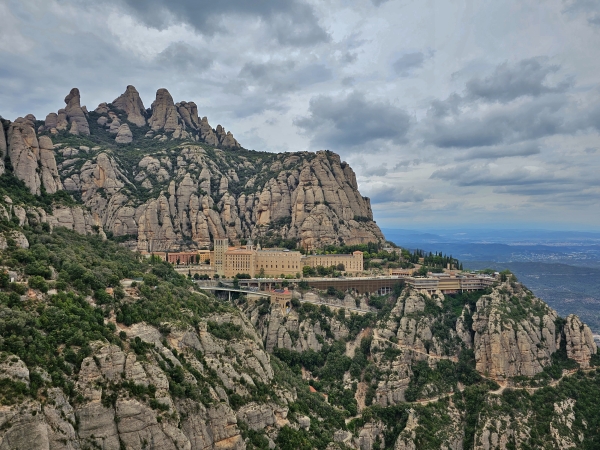
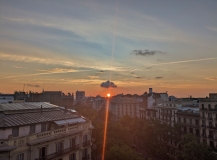

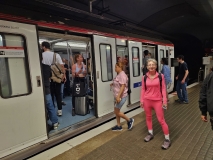
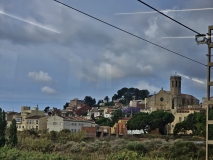
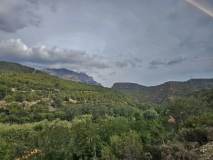
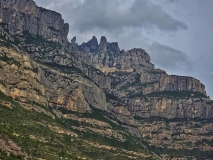
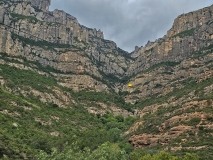
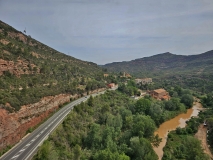
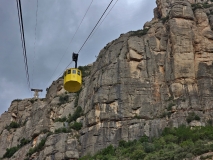
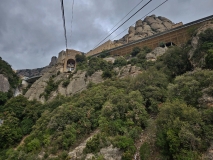
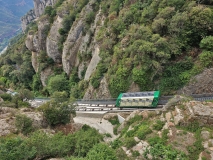
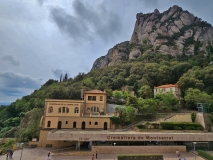
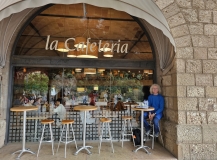
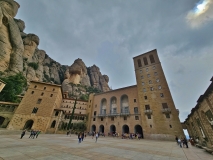
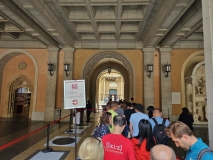
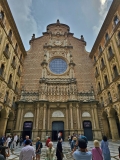
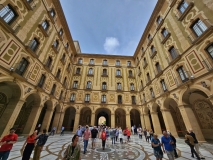
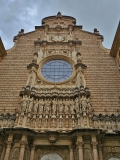
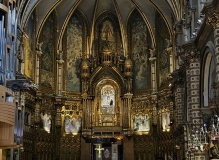

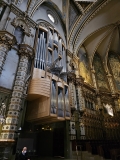


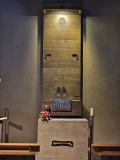
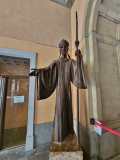
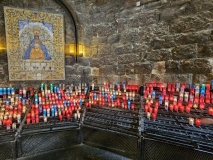
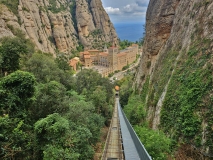
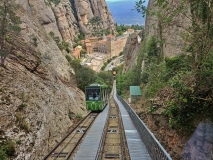
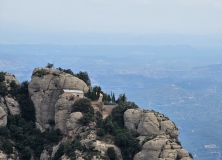
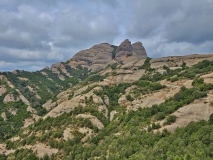
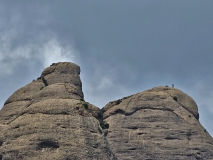
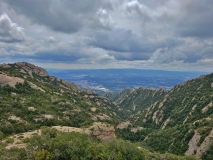
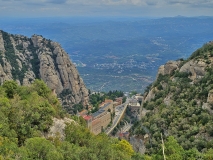
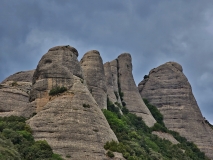
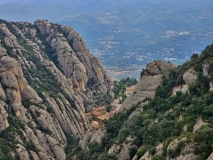


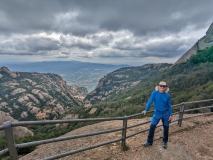
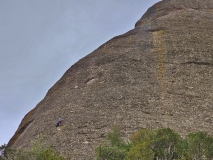
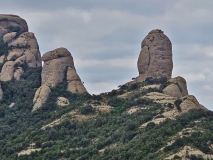
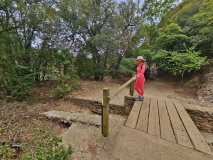

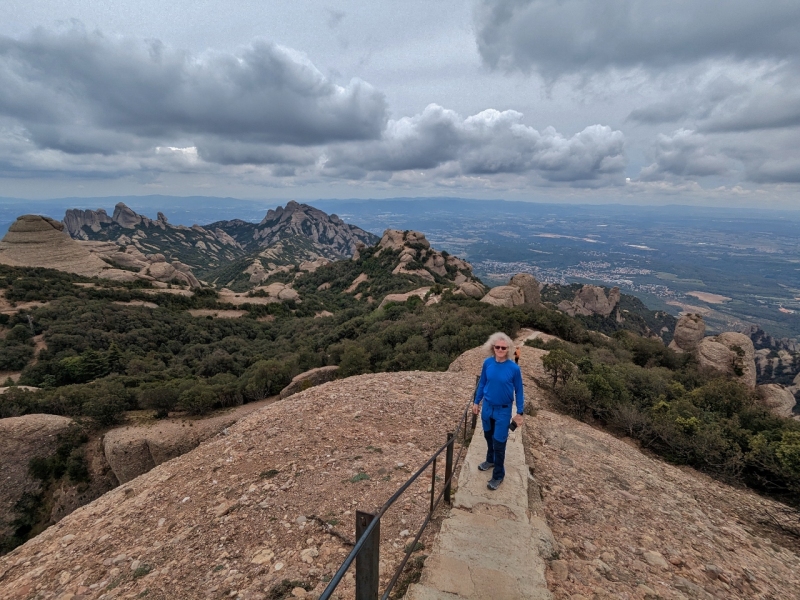
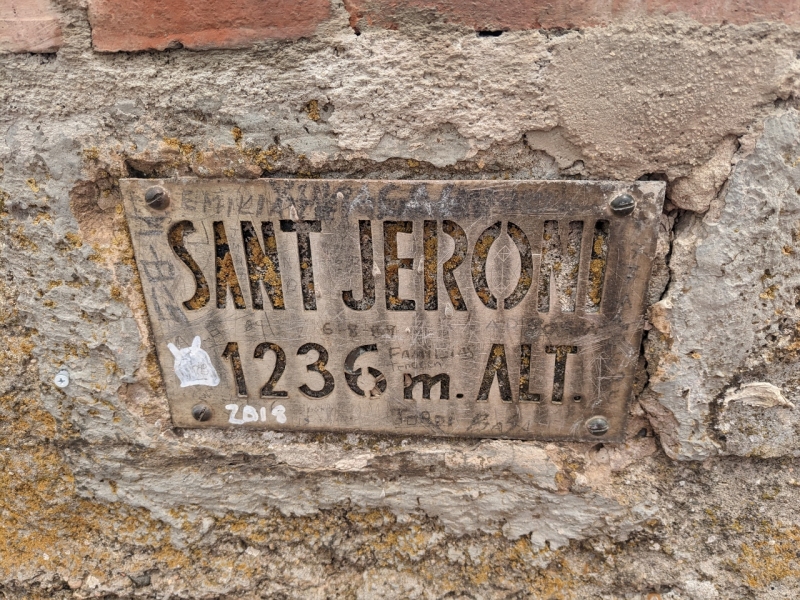
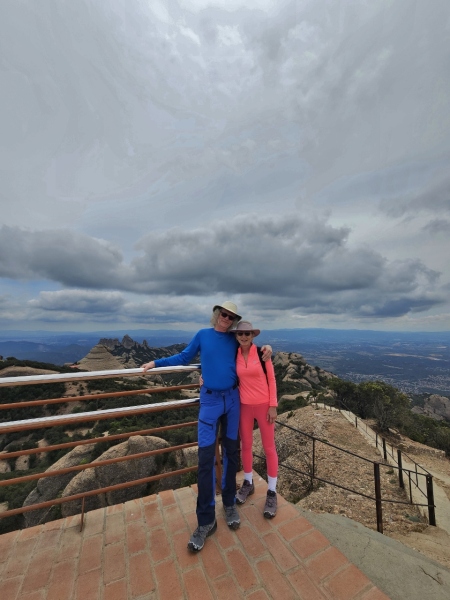
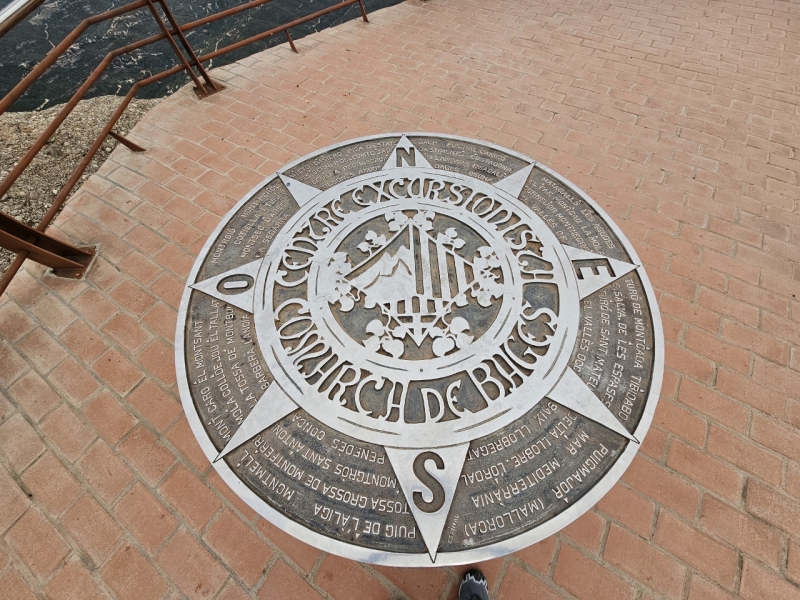
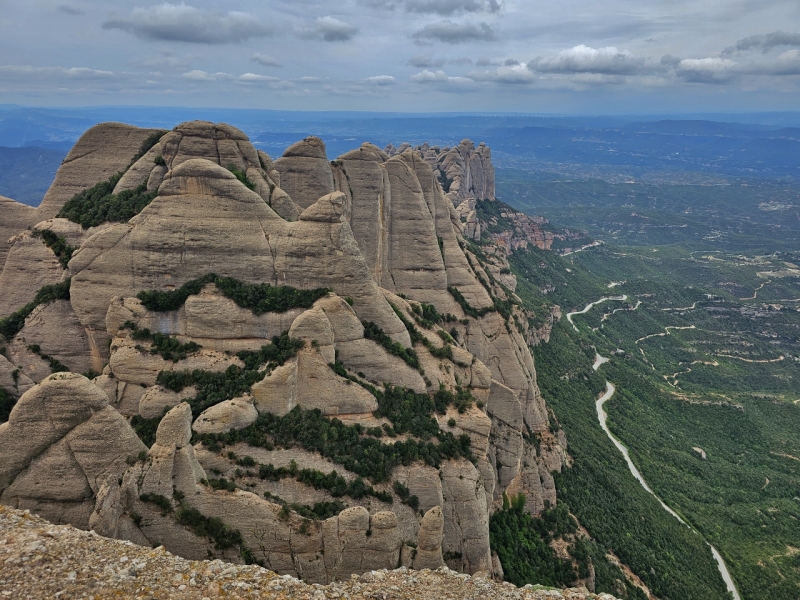
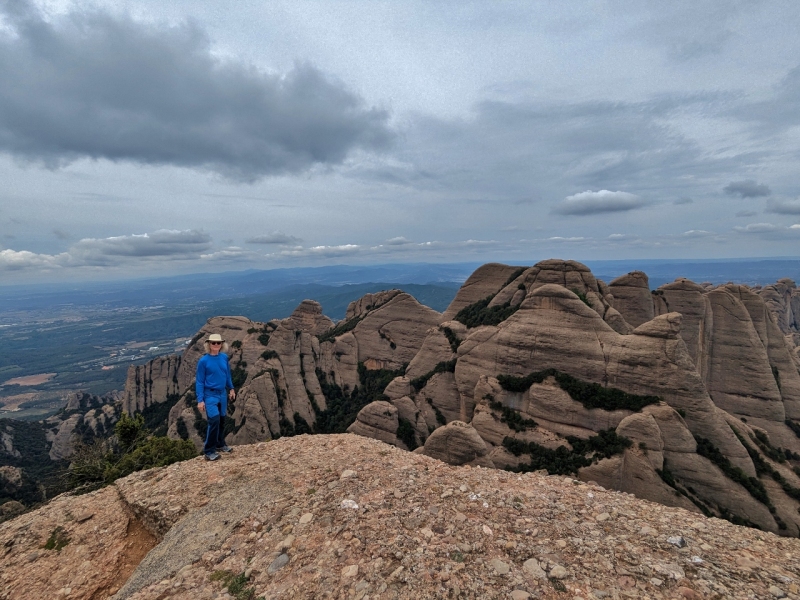
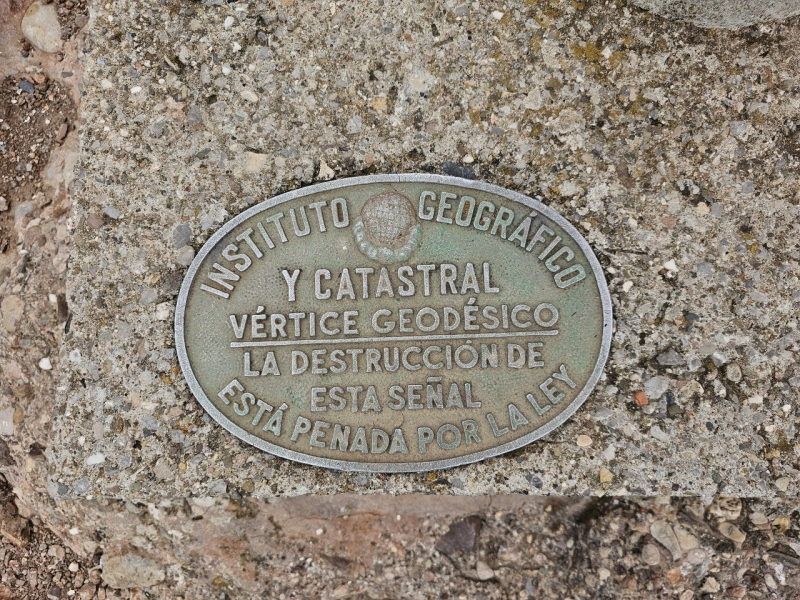
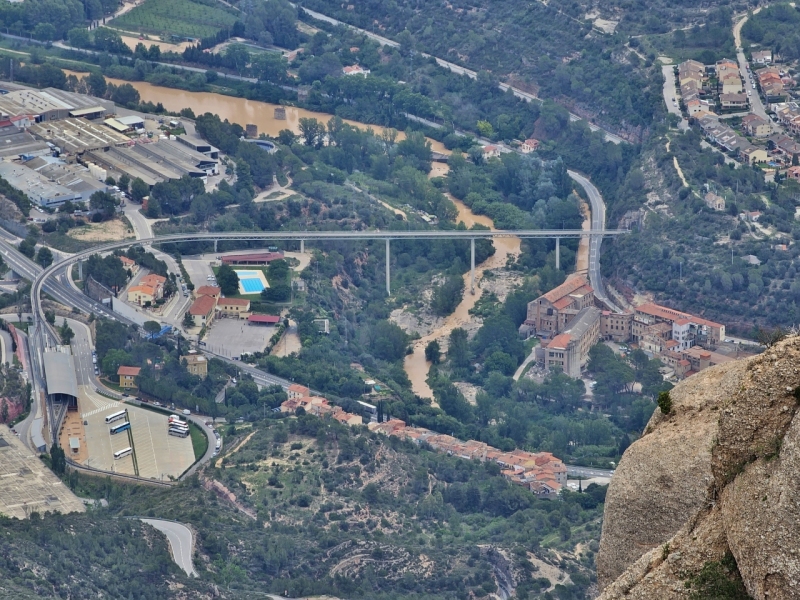
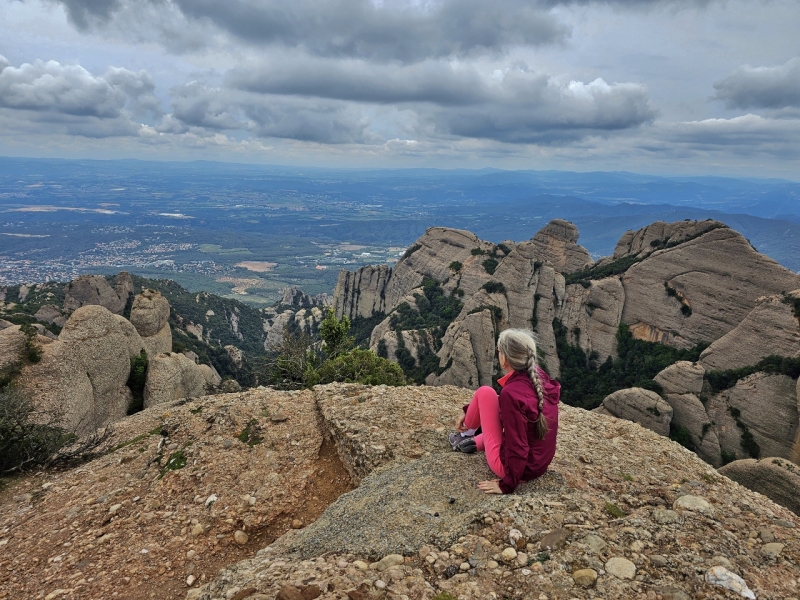
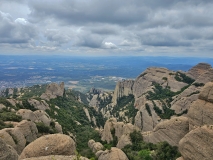
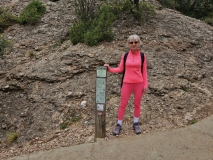
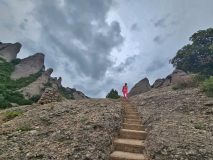
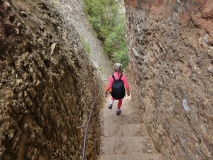
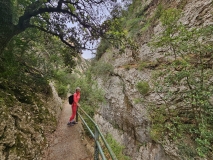
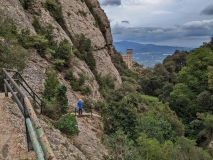

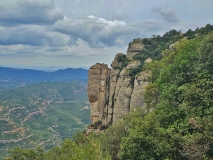
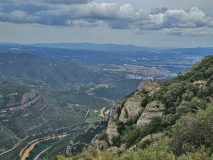
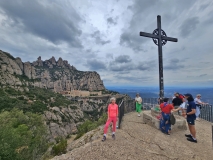

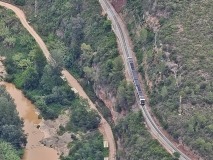
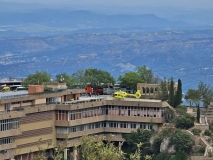
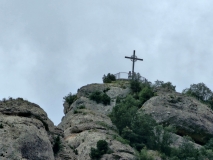

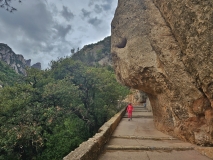
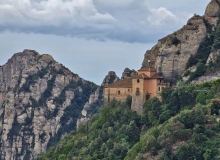
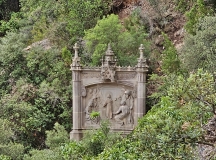
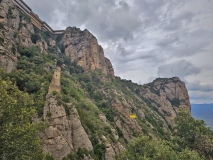
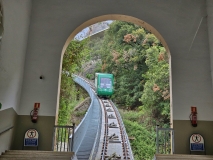
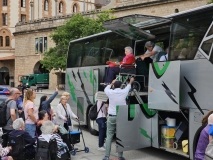


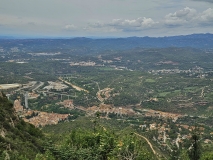

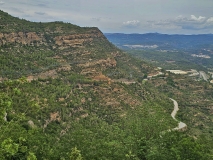
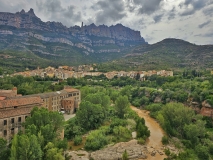
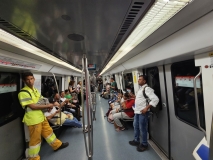
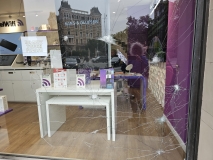
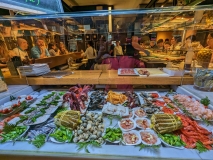

If your comment doesn't show up right away, send us email and we'll dredge it out of the spam filter.